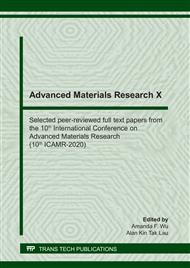p.68
p.73
p.81
p.87
p.92
p.97
p.102
p.109
p.115
Conjugation of Antibody on Gold Nanoparticles for Biosensors Application
Abstract:
Regarding to the unique optical property and biocompatible, gold nanoparticles have been widely used to functionalize with antibodies probe for testing specificity with their antigen targets. The antibody immobilized onto gold nanoparticles which synthesized by different methods were studied. Gold nanoparticles synthesized by citrate reduction method and by using poly (ethylene) glycol (PEG) coated gold nanoparticles were immobilized with IgM antibody by physical adsorption. Gold nanoparticles before and after functionalize with antibodies were characterized with fourier-transform infrared spectroscopy (FTIR) for functional group and UV-Vis spectroscopy for absorption wavelength. Finally, a specificity test was conducted using spot of anti-IgM antibody onto nitrocellulose membrane to confirm the bioactivity of antibodies attached to gold nanoparticles.
Info:
Periodical:
Pages:
92-96
Citation:
Online since:
July 2020
Keywords:
Price:
Сopyright:
© 2020 Trans Tech Publications Ltd. All Rights Reserved
Share:
Citation:


